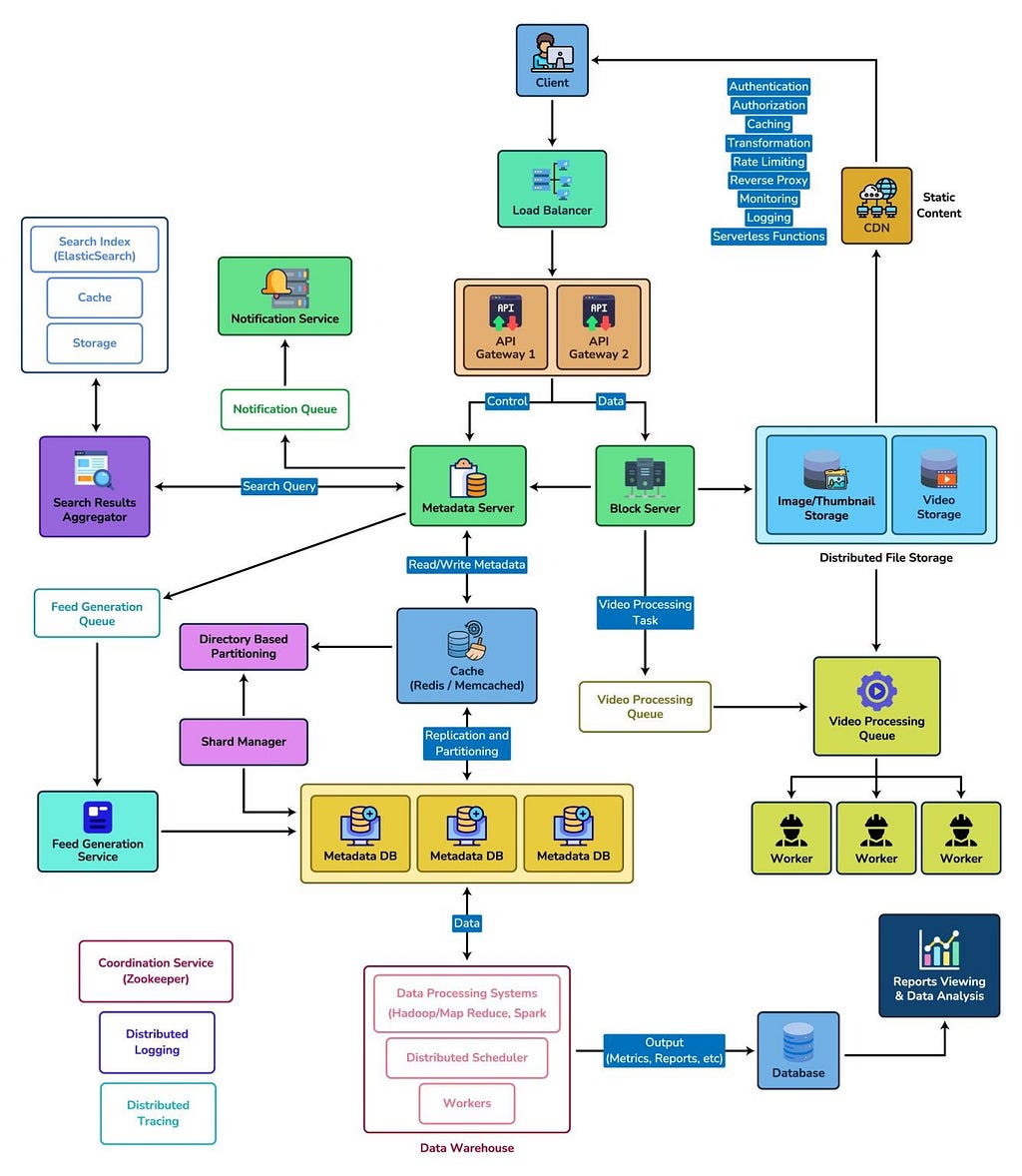How to Prepare for FAANG Interviews in 2025(With Top Free and Paid Resources)
These are the best free and paid resources to prepare for FAANG interviews in 2024

Hello guys, preparing for your first FAANG (Facebook, Amazon, Apple, Netflix, Google) or top-tier tech interview can feel overwhelming. The process is intense, rigorous, and often unpredictable.
However, with the right strategy, tools, and mindset, you can navigate it successfully — just like many engineers before you.
In the past, I have shared the System Design Interview Prep Guide as well as the best System Design interview books, courses, cheat sheets, and websites and in this article, I am sharing resources for FAANG interviews with complete guide about how to go for your first FAANG interviews.
I’ll also share a tried-and-tested roadmap for preparing for FAANG interviews, including key focus areas, timelines, and top free and paid resources to maximize your chances of success.
Whether you’re an L4 candidate (<4–5 years experience) or targeting L5+ roles (5+ years experience), this guide will help you build a plan that works.
By the way, if you are preparing for System design interviews and want to learn System Design in-depth then you can also check sites like ByteByteGo, Design Guru, Exponent, Educative, Codemia.io, and Udemy which has many great System design courses

Understand the Process (and Cooldowns)
The first and most important thing is to understand the process and how things works, if you know this well then you can plan better and also execute your strategy better, otherwise, you will be keep wasting your chances.
How FAANG Interviews Typically Work:
- Online Assessment (OA)
2–3 coding questions (medium to hard), sometimes multiple-choice system design for L5+.
→ Fail = 6-month cooldown. - Phone/Virtual Technical Interview
L4-: DSA + some behavioral (Amazon = 50% behavioral).
L5+: DSA + System Design (HLD).
→ Fail = 12-month cooldown. - Onsite/Virtual Onsite
3–4 rounds covering DSA, LLD, behavioral (L4-); add HLD for L5+.
→ Fail = 12-month cooldown.
✅ Tip: Apply only when ready. Rejections = enforced cooldowns that delay your next opportunity.

Your Preparation Areas (with Best Resources)
There are two most important thing to remember while preparing for FAANG interviews, Data Structures and Algorithms and System Design, if you have good grasp on this then you are all set but to master these you need to use top notch resources which I am going to share next.
1️⃣ Data Structures & Algorithms (DSA)
Every candidate, from L4 to L6, must master DSA.
Free Roadmaps:
- Neetcode 150, Striver’s A2Z Sheet, r/leetcode.
Paid Resources:
- AlgoMonster (interactive DSA patterns and practice)
- BugFree.ai (AI code review + problem solving)
- Codemia (DSA + system design practice with auto feedback)
- LeetCode Premium (for company-tagged problems — worth it if affordable)
✅ Pro tip: Apply spaced repetition — revisit tricky problems regularly to lock in patterns.

2️⃣ Low-Level Design (LLD)
LLD is essential for L4+ at Amazon, and L5+ elsewhere.
Free Options:
- GitHub: LLD question repo
- Discuss + r/leetcode LLD questions
Paid Resources:
- DesignGuru (great for LLD + HLD practice)
- System Design School
- AlgoMaster (great LLD question bank)
✅ Approach: Use ChatGPT or similar AI to validate your designs and reasoning.

3️⃣ High-Level Design (HLD / System Design)
HLD is critical for L5+ roles, espeically for senior software engineer and staff engineer roles.
Free Options:
Paid Resources:
- ByteByteGo (Alex Xu) (visual system design deep dives)
- System Design School
- DesignGuru
- System Design One
- System Design Interview Book
- DDIA (must-read)
✅ Approach: Focus on fundamentals: scalability, availability, consistency, and trade-offs. Mock designs repeatedly.

4️⃣ Async Programming & Language Mastery
Whatever language you choose (Python, Java, JS, etc.), you must know it well — including async features.
✅ Tip: Use ChatGPT or BugFree.ai to generate and debug examples like timers, schedulers, async calls.

🚀 Mock Interviews
Simulating interviews is one of the most effective prep strategies.
- Exponent (coaching + mock interviews)
- InterviewKickStart (premium coaching for serious candidates)
- Codemia (mock system design + DSA with AI feedback)
- Pramp (free mock interviews with peers)
- BugFree.ai (AI Interview)

💡 AI & Tools for Efficient Prep
Use AI tools to accelerate your learning:
- ChatGPT: Explains concepts, evaluates code, gives feedback.
- BugFree.ai: Auto-reviews your code & suggests optimizations.
- Codemia: Practice system design + DSA in LeetCode style.
📝 Final Prep Timeline
👉 4–6 months = common for strong prep if consistent
👉 Daily goal = 2 DSA questions + 1 design (LLD/HLD alternate days)
👉 Mock interview once every 2–3 weeks
Top FAANG Interview Resources List (Free + Paid)
Here is a summary of all the free and paid resources you can use to prepare for FAANG interviews in 2025.
DSA
free — LeetCode, Neetcode, r/leetcode
paid — AlgoMonster, BugFree.ai, Codemia
LLD
free — GitHub LLD repos
paid — DesignGuru, AlgoMaster
HLD
free — Free system design courses, GitHub
Mock Interviews
free — Peer groups or Pramp
paid — Exponent, InterviewKickStart
General Learning
free — YouTube (Neetcode, Striver)
paid — Educative, Coursera, Udemy
Final Words
Let’s accept the fact, your first FAANG interview journey will test your limits — but the right preparation strategy makes all the difference. Be patient, stay disciplined, and lean on both free and paid resources where they provide the most value.
👉 Ready to start? Pick your resources and build a plan that fits your style.
👉 And remember: AI is your prep partner — use it wisely! especially in 2025, not using AI for interview prep is a big mistake.
Other System Design Tutorials and Resources you may like
- 16 Best Resources for System Design Interview Prep
- Is DesignGuru’s System Design Course worth it
- Is ByteByteGo a good place for Coding interviews?
- 3 Free Books and Courses for System Design Interviews
- Is System Design Interview RoadMap by DesignGuru worth it?
- Is Exponent’s System Design Course worth it?
- 10 Best Places to Learn System Design in 2025
- How to Prepare for System Design Interview in 2025
- Is ByteByteGo worth the hype?
- My Favorite Software Design Courses for 2025
- ByteByteGo vs NeetCode vs Educative? Which one is good?
- 10 Reasons to Learn System Design in 2025
- 6 Best System Design and API Design Interactive Courses
- Top 5 System Design YouTube Channels for Engineers
- 3 Places to Practice System Design Mock interviews
- 20 System Design Interview Questions for Practice
- Is Designing Data-intensive application book worth reading?
All the best for your System Design Interviews, if you have any doubts or questions, feel free to ask in the comments.
P. S. — If you just want to do one thing at this moment, go join ByteByteGo and start learning System Design and Coding Interview concepts, you will thank me later. It’s one of the most comprehensive resource for system design interview now covering OOP Design, ML Design, Gen AI Design and traditional System Design.
System Design · Coding · Behavioral · Machine Learning Interviews
How to Prepare for FAANG Interviews in 2025(With Top Free and Paid Resources) was originally published in Javarevisited on Medium, where people are continuing the conversation by highlighting and responding to this story.
This post first appeared on Read More

